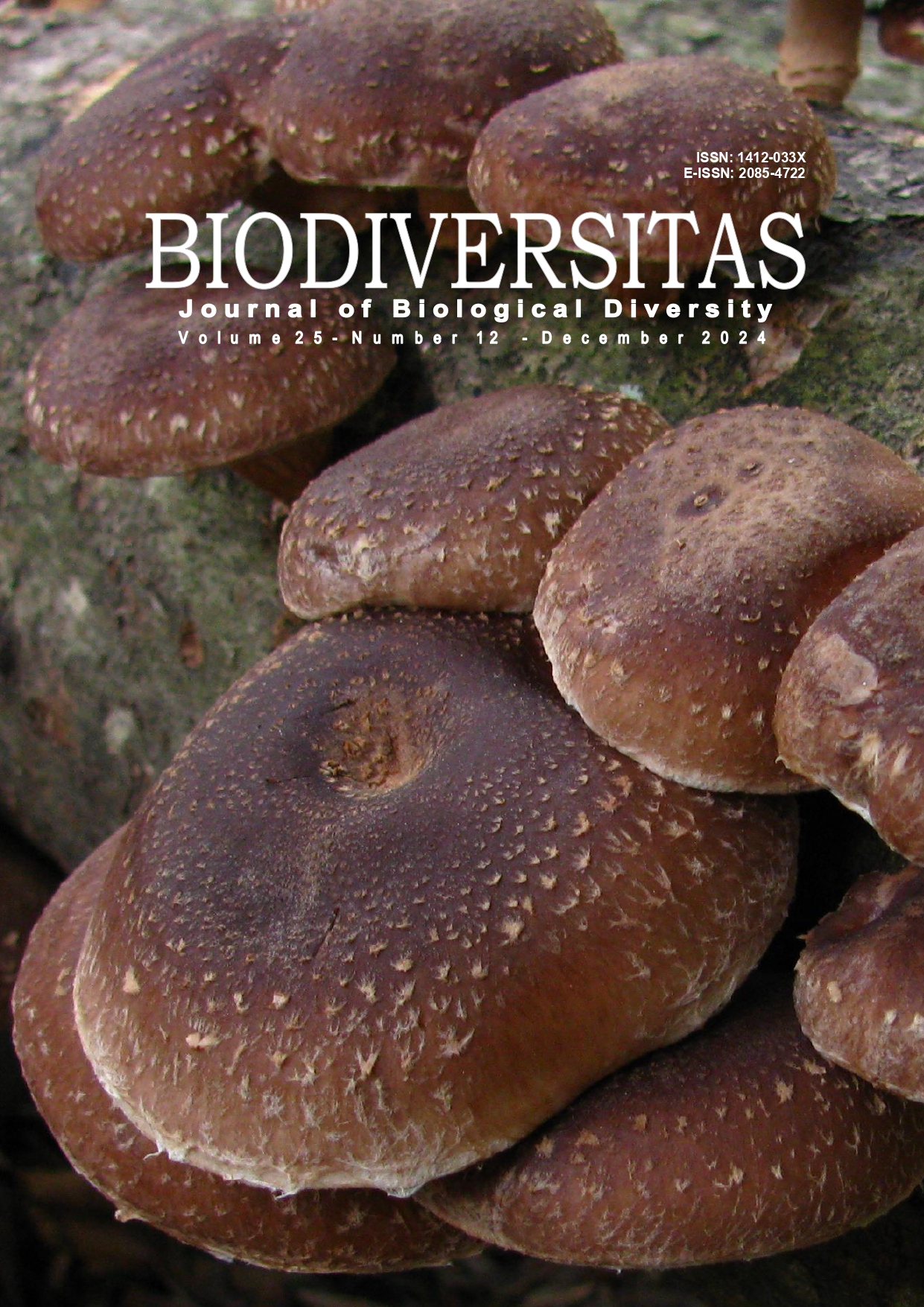Impact of intermittent stream flow on water quality and structural composition of macroinvertebrates in a semi-arid region of South Africa
##plugins.themes.bootstrap3.article.main##
Abstract
Abstract. Matita TP, Addo-Bediako A, Luus-Powell W. 2024. Impact of intermittent stream flow on water quality and structural composition of macroinvertebrates in a semi-arid region of South Africa. Biodiversitas 25: 5074-5082. This study investigated the impact of varying flow regimes on water quality and the structural composition of macroinvertebrates in the Moopitse River, South Africa. Samples were collected during three distinct flow conditions: high flow, low flow, and intermittent flow. Water quality parameters were measured in situ, and water samples were collected for nutrient analysis before macroinvertebrate sampling. A total of 4,094 individuals, representing seven orders and 22 families, were recorded. The assessment, based on water quality and macroinvertebrate structure, revealed that intermittent flow (cessation of flow) negatively affected both water quality and the distribution of macroinvertebrates. There was a decline in both taxa richness and abundance in response to flow intermittency. The observed low taxa richness and abundance, particularly during high flow and intermittent regimes, align with expectations for such hydrologically extreme habitats. Compared to the perennial rivers in the Olifants River Basin, the Moopitse River is less diverse, as the intermittent environment favors generalist and stress-tolerant taxa rather than sensitive taxa. Water parameters such as turbidity, conductivity, total dissolved solids (TDS), and nutrient levels were significantly higher during intermittent flow, while dissolved oxygen levels were notably lower. Overall, water quality was best during low flow, which also supported greater macroinvertebrate richness and abundance. These findings suggest that river discontinuity may lead to habitat degradation, thereby altering the structural distribution of macroinvertebrate communities. Understanding the effects of flow variation and habitat changes is crucial for environmental and biodiversity conservation. Therefore, conservation strategies should incorporate innovative approaches to mitigate the impacts of flow discontinuities and habitat degradation.

